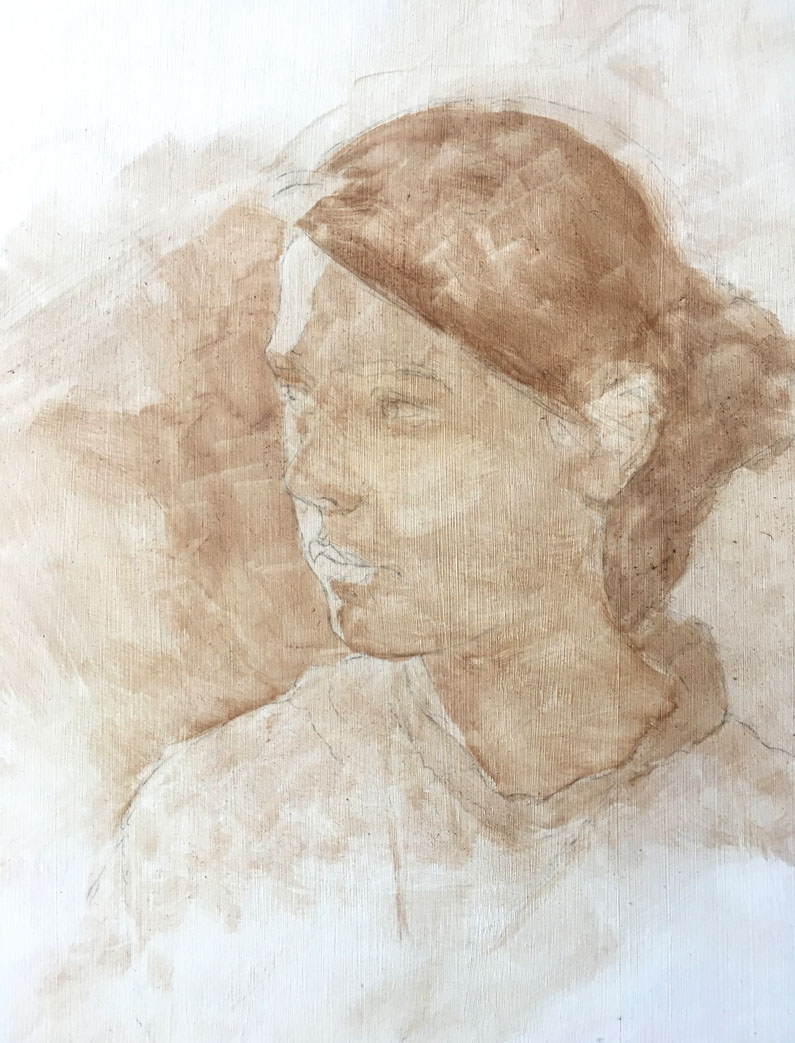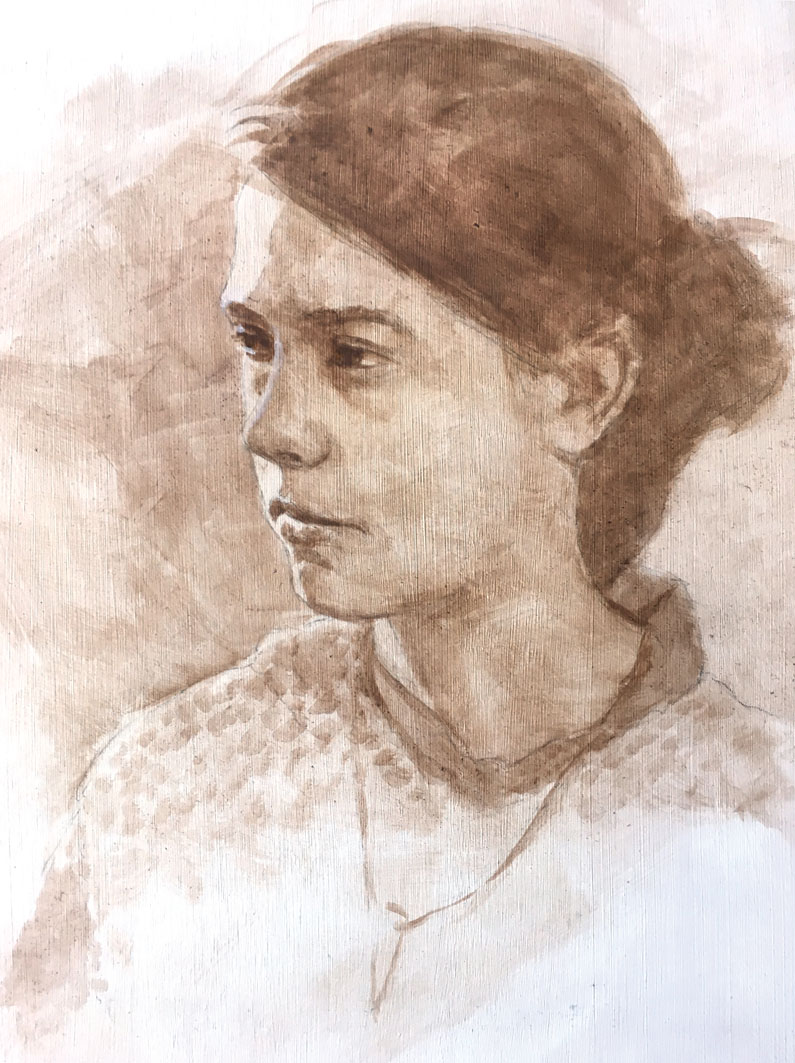Create more interesting skin tones with acrylics
How to achieve lively skin tones using stacked, thin washes and a 'dusting' technique.

Being synthetic, acrylic paints can tend towards a somewhat plastic texture and feeling – especially if you attempt to emulate oil paint by applying the pigment thickly. Things can quickly become glue-like and frustrating. I work around this by treating the best acrylic paint as the water-based medium it is, building up many thin layers of subtle colours. It requires patience, but the results can be gorgeous, and you can achieve much more lively and compelling skin tones.
The key to this painting technique is to keep the pigment very thin on the brush – barely there at all. I mix the paint very thinly as well, and often wipe everything from the brush. A wet palette is vital when mixing, but even though this is a wet effect, I call it 'dusting', because the final result can have a soft, powder-like texture.
Each quick wash can have a great effect, and the more you add, the richer the effect. Tight control of your palette can help control things as you progressively stack the washes. Naturally, it's important to allow drying time between washes so that successive applications of colour don't damage the previous ones. Those drying times are fairly short, though, since the layers are so thin. Be patient.
Follow these steps for thinly washed acrylic skin tones.
01. Draw faint pencil outlines

'Dusting', as I call it, works best on a gessoed composite panel board – it absorbs fast and can take a fair bit of abuse. I do a pencil sketch on two coats of gesso, using my father's old mechanical pencil and a 2B/4B lead. Then I use a kneaded eraser to lift most of the pencil back off.
02. Lay down a thin wash

I then cover the entire board with a thin wash of Ultramarine and Burnt Umber. This seals the pencil from smearing any more, and I find the colour is a nice base for building skin tones on. I use a wide flat brush and try to create interesting marks to lie beneath everything.
03. Build lightness and darkness

Now I block in the values (lightness or darkness), using the same mix but adding some Titanium White for more opacity. Even in the darkest areas, it is still very thin! At this stage I want to nail down the values so that in the next phase I can think about colour alone.
Daily design news, reviews, how-tos and more, as picked by the editors.
04. Finish the colour

For skin tones, I use a very light wash of Cadmium Red and Cadmium Yellow Light, with Venetian Red and Titanium White added to alter temperature (Venetian Red is ideal here as it's so easily pushed warm or cool). I keep more saturated colours near the shadow transition edges.
This article was originally published in issue 1 of Paint & Draw magazine, the magazine offering tips and inspiration for artists everywhere. Buy back issues of Paint & Draw here.
Related articles:
- How to draw and paint - 100 pro tips and tutorials
- 5 things you need for oil painting
- How to draw movement: 16 top tips
